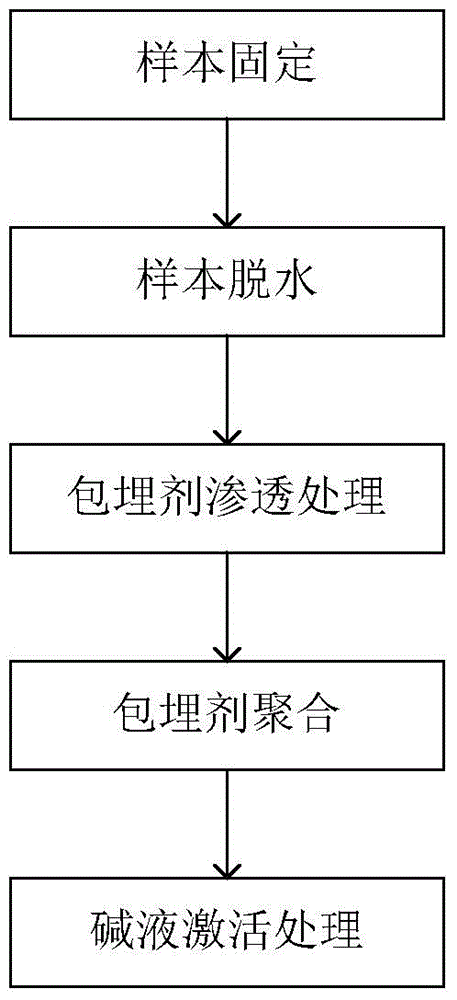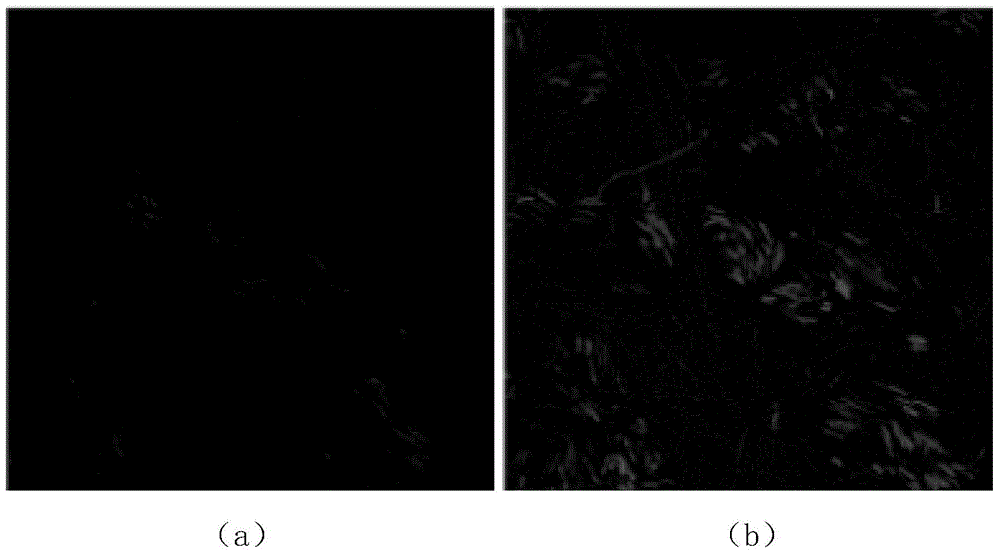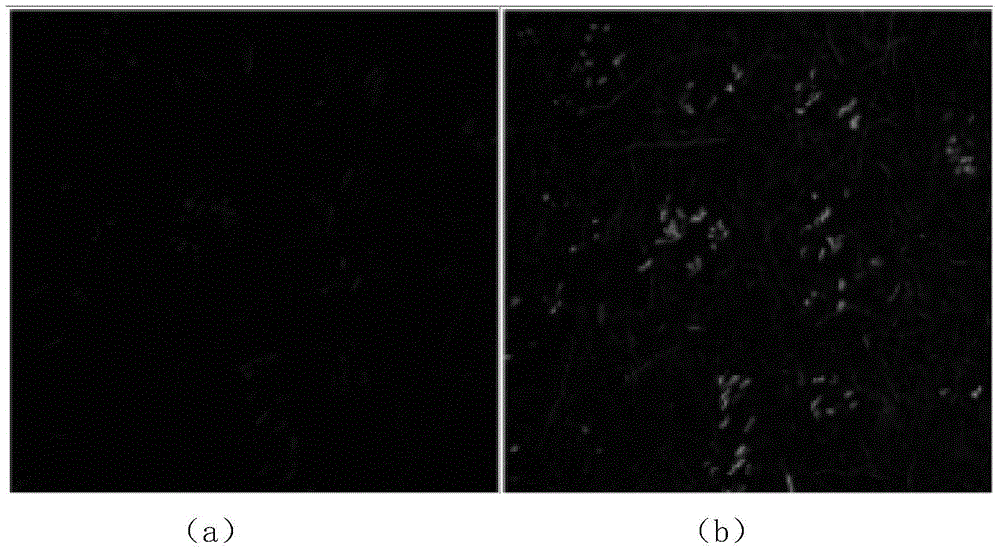Resin embedding method for biological tissues marked by fluorescent protein and application of alkaline solution
A technology of biological tissue and fluorescent protein, which is applied in the application of alkaline solution, and in the field of resin embedding of fluorescent protein-labeled biological tissue, can solve the problems of unavoidable fluorescence quenching, low fluorescence brightness, poor imaging effect, etc., and achieve fluorescence intensity And the effects of good image quality, improved fluorescence intensity, and excellent cutting performance
- Summary
- Abstract
- Description
- Claims
- Application Information
AI Technical Summary
Problems solved by technology
Method used
Image
Examples
Embodiment 1
[0052] The resin embedding method of the whole brain of thy1-YFPH mice includes the following steps:
[0053] (1) The sample is fixed.
[0054] The GFP derivative, enhanced yellow fluorescent protein (EYFP)-labeled mouse whole brain is fixed by chemical fixation means to obtain fixed EYFP-labeled biological tissue.
[0055] Specific steps are as follows:
[0056] After the heart was perfused at 4°C, the dissected whole brain of the mouse was soaked in 4% PFA solution for about 12 hours. Use 40ml of PBS solution, rinse for four hours each time.
[0057] (2) Sample dehydration.
[0058] The fixed EYFP-labeled mouse whole brain was replaced with ethanol, so that the biological tissue was dehydrated, and the dehydrated EYFP-labeled mouse whole brain was obtained.
[0059] The specific steps are:
[0060] At 4°C, the fixed EYFP-labeled mouse whole brain was sequentially passed through 20 ml of gradient ethanol double-distilled water solution, soaked for 2 hours, and dehydrated...
Embodiment 2
[0073] The resin embedding method of the whole brain of thy1-GFPM mice comprises the following steps:
[0074] (1) The sample is fixed.
[0075] The GFP derivative, enhanced green fluorescent protein (EGFP)-labeled mouse whole brain is fixed by chemical fixation means to obtain fixed EGFP-labeled biological tissue.
[0076] Specific steps are as follows:
[0077] After perfusing the heart at 4°C, the dissected whole brain of the mouse was soaked in formalin solution for about 12 hours. The amount of formalin solution was 20ml per mouse, and then rinsed with PBS solution three times, each Use 40ml of PBS solution, rinse for four hours each time.
[0078] (2) Sample dehydration.
[0079] The fixed EGFP-labeled mouse whole brain was replaced with ethanol, so that the biological tissue was dehydrated, and the dehydrated EGFP-labeled mouse whole brain was obtained.
[0080] The specific steps are:
[0081] At 4°C, the fixed EGFP-labeled mouse whole brain was sequentially passe...
Embodiment 3
[0094] GFP-labeled mouse brain resin embedding method, comprising the following steps:
[0095] (1) The sample is fixed.
[0096] The green fluorescent protein (GFP)-labeled mouse whole brain was fixed by chemical fixation means to obtain fixed GFP-labeled biological tissue.
[0097] Specific steps are as follows:
[0098] After the heart was perfused at 4°C, the dissected whole brain of the mouse was soaked in 4% PFA solution for about 12 hours. Use 40ml of PBS solution, rinse for four hours each time.
[0099] (2) Sample dehydration.
[0100] The fixed GFP-labeled mouse whole brain was replaced with ethanol, so that the biological tissue was dehydrated, and the dehydrated GFP-labeled mouse whole brain was obtained.
[0101] The specific steps are:
[0102]At 4°C, dehydrate the fixed GFP-labeled mouse whole brain through 20 ml of gradient ethanol double distilled water successively for 2 hours. The concentration gradient of ethanol double distilled water solution is 50%...
PUM
 Login to View More
Login to View More Abstract
Description
Claims
Application Information
 Login to View More
Login to View More - R&D
- Intellectual Property
- Life Sciences
- Materials
- Tech Scout
- Unparalleled Data Quality
- Higher Quality Content
- 60% Fewer Hallucinations
Browse by: Latest US Patents, China's latest patents, Technical Efficacy Thesaurus, Application Domain, Technology Topic, Popular Technical Reports.
© 2025 PatSnap. All rights reserved.Legal|Privacy policy|Modern Slavery Act Transparency Statement|Sitemap|About US| Contact US: help@patsnap.com



